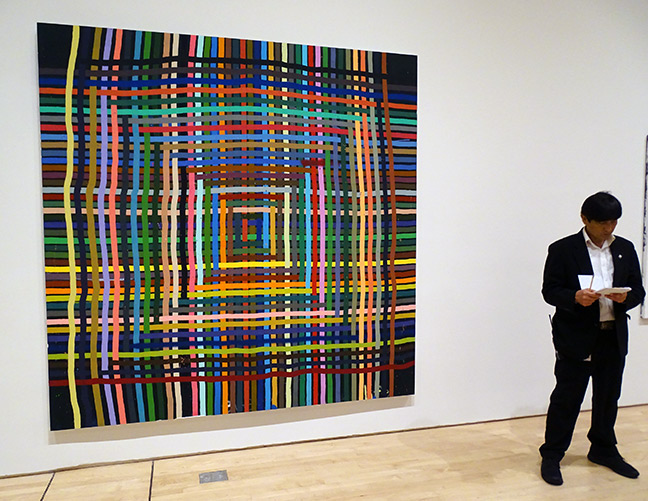How to Donate Art: A Primer
People who donate art to museums don't always actualize the hopes and dreams they have for their donations. The most common complaint from donors is that museums don't show their donations, but rather assign them to various storage facilities where they sit and gather dust. A less common but more serious complaint is that museums sometimes sell donated art in order to raise funds. These problems arise in almost all cases because donors don't understand how museums operate and how they treat donated art (or any other donations, for that matter).
When a museum accepts donated art, that art becomes part of what is referred to as the museum's "permanent collection." Most donors assume that the permanent collection is made up of all the art in a museum, including donations, and that every piece of that art remains in the collection for all time. This is not necessarily the case. The permanent collection exists as a continually changing and evolving body of art, and in many cases, individual pieces in that collection remain there only as long as they're relevant to the collection as a whole.
Museum curators are quick to point out that, unless otherwise stated, when a museum accepts a work of art for donation, that museum believes the art is beneficial to its permanent collection and intends to keep it in the collection for all time. Curators also point out, however, that they're not infallible. Tastes change, museum staffs change, the content and direction of collections change, museums acquire works of art that are superior in quality or more important than similar examples they currently own, some art turns out to be not as important as curators first thought it was, and so on. A few museums, such as the National Gallery of Art, keep all donations and never deaccess, but the majority of museums reserve the right to sell or otherwise deaccess works of art that no longer serve any purpose in their collections. Not to worry though. The substantial majority of today's donations are never sold and remain permanently within museum permanent collections.
As for exhibiting donated art, curators do their best to accept art they believe will eventually be exhibited, but here again, they're not infallible. Deciding which works of art will go on display at some future point often involves speculation and judgment calls. For example, a museum may accept or even purchase a painting by a promising young artist thinking that it will eventually hang on exhibit in the permanent collection, but that artist's career may fizzle, and they may fade into permanent obscurity (along with their art). Not only will that art probably never get shown, but chances are also good that it will eventually be sold. Other reasons for not showing art are that museums have limited display space, curatorial changes impact what museums show, exhibition schedules are put together years in advance, some art has more research value than display value, and some art may be great, but out of fashion and not what the museum thinks the public wants to see at the moment.
For all you potential donors out there, understanding the fate of your donations before you donate is your responsibility. Never assume anything; donation policies vary from institution to institution. When meeting with curators, ask direct questions, tell them why you want to donate, make all special requests before you donate, and most importantly, keep your ego in check.
Have curators explain their donation policies and tell you what the future holds for your donations. All curators abide by strict codes of ethics and give the best explanations possible. They usually have pretty good ideas of what's in store for individual works of art over the next twenty years or so. At the same time, be aware that no one can look far into the future and predict either the course of art history, how the scholarly community will eventually view particular types or works of art, or what your donation's ultimate significance will be.
Museums prefer that donors not make specific requests regarding their donations, thereby giving donated art what's called "unrestricted status." Curators then have complete control over the art and can do with it as they please (many museums insist on unrestricted donations). If you want your donation to have restrictions, tell the curators. Make whatever requests you want-- that your art never be deaccessed, that it be shown within a certain time period, included in a catalogue, and so on. Institutions consider all such requests and either accept them, ask that they be modified, or deny them altogether. The more important the art, the better the chances that restrictions will be honored. If a museum refuses to accept your restrictions, you can either donate to them anyway or look for other institutions whose long range plans may be more in line with your own.
In the end, you have to be honest with yourself about your intentions in donating as well as about the quality of your donations. If, for example, you want your art to be placed on permanent display, the art has to be deserving of that honor. If it's not at least as good as and preferably better than the quality of what's currently in the museum's collection, then it'll probably only be shown periodically, assuming it gets shown at all.
Donors occasionally insist on donating their entire collections, while museums only want the most relevant or important items. This situation can be difficult for some donors as far as their egos go because they hate to see their collections broken up after investing so much time, energy and money assembling them. Unfortunately, most of the art in most collections is redundant with what museums already own and for museums to accept every collection offered to them in its entirety makes no sense. Costs of storage, space limitations and related considerations make accepting every proposed donation in its entirety virtually impossible. If a museum only wants a portion of your total donation, be honest with yourself about the overall quality of the remaining pieces in your donation, don't be insulted, check your ego, and seriously consider giving the museum what it asks for.
Museums, of course, want all donors to donate great art that fits perfectly into their collections, but increasingly, they're also looking for art of lesser quality that they may be able sell in order to benefit their acquisitions programs. True, donors may be disappointed when they learn that museums would rather sell portions of their donations than keep them, but then again, what better way to support these institutions in their efforts to build quality collections and properly maintain the ones they already have. If a museum brings up the possibility of selling either all or part of your donation, and you don't like the idea, try other museums to see what options they're willing to offer. If all offers are similar, think about taking the best one and donating anyway.
No matter what type of donation you make, make sure you understand the tax implications. Either talk to your accountant or tax preparer or have curators recommend appraisers or tax specialists who can explain tax benefits to you. Make sure you follow appraisal procedures, file appropriate tax forms and accurately state the value of all donated art. Don't attempt to determine values yourself; have the art appraised. Donations of over $5,000 require appraisals, are now subject to review by the Internal Revenue Service, and both you and your appraiser can be penalized for misstating dollar values.
If you insist on concessions or guarantees from museums, but can't get them, you can always sell your art rather than donate it. Selling can be just as rewarding a way to disperse your collection because new collectors will now have the opportunity to live with and enjoy the art that has enriched your life for so many years. Whenever you can, however, support your museums, make those donations, make them unrestricted, and don't worry about the ultimate fate of your art. Our museums need all the help they can get.

(art by Alicia McCarthy)

Current Features
- How to Buy Art on Instagram and Facebook
More and more people are buying more and more art online all the time, not only from artist websites or online stores, but perhaps even more so, on social media ... - Collect Art Like a Pro
In order to collect art intelligently, you have to master two basic skills. The first is being able to... - San Francisco Art Galleries >>


